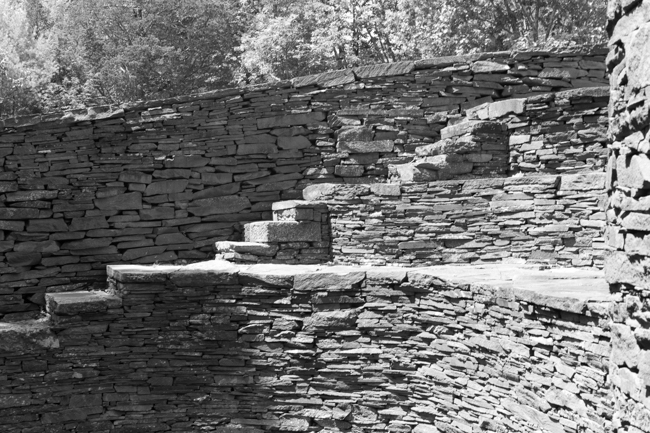Opus 40
50 Fite Rd
Saugerties, NY
Opus 40 is the work of just one man, Harvey Fite (December 25, 1903 – May 9, 1976). The sculpture, made of bluestone from the local quarries, covers 6 1/2 acres
Fite created Opus 40 by hand. The work, which he said would take him 40 years (thus the name), consisted of ramps, stairways, pools, moats and other configurations carved in the bluestone. Fite died three years prior to the slated 40 year timeline.
Born in Pittsburgh, Pennsylvania,Fite grew up in Texas, where his family had moved early in his childhood. As a young man he attended evening courses in law for three years, before deciding not to pursue it as a career. At that point he moved east to study for the ministry at St. Stephen’s College, a small Episcopal institution in Annandale-on-Hudson, in New York’s Hudson Valley. Once there, Fite was drawn to the stage at the campus theater, and at the end of his third year he dropped out. He joined a traveling troupe of actors, and later moved to Woodstock, where he performed with a local theater. According to an anecdote that his stepson, Tad Richards, relates, Fite discovered his passion for sculpting suddenly one day when, while sitting backstage during a performance, he absentmindedly pulled out his pocketknife and began whittling on a seamstress’s discarded spool that had rolled under his chair.
Mr. Fite, went on to study art at St. Stephen’s College and in Florence, Italy, where he studied with Corrado Vigni.
Fite is also known for founding the fine arts program at Bard College in Annandale-on-Hudson, New York.
His works are on display in the Whitney Museum of American Art and the Albany Institute of History and Art. In 1938 Fite was commissioned by the Carnegie Institution in Washington to restore ancient Mayan sculpture in Copan, Honduras. His work was shown in 1953 and 1954 as part of the Department of State traveling group shows in Europe and Africa.
Opus 40 was added to the National Register of Historic Places in 2001 and has been described in Architectural Digest as “one of the largest and most beguiling works of art on the entire continent.” *
* *
*



